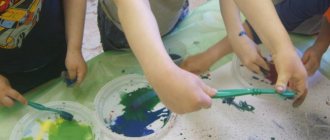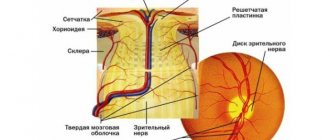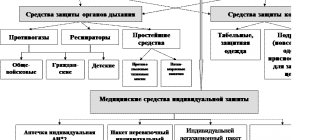History of origin
Fairytale therapy as a separate branch of psychotherapy arose in St. Petersburg and its founder was Tatyana Zinkevich-Evstigneeva. It was she who turned the idea of using folklore characters for psychotherapy into a whole branch of science. Then many domestic psychologists and psychotherapists used this method in their practice (E. Fromm, Vachkov I.V., Lisina E. and others).
Fairy tales have been used since ancient times to convey information. Fairy tales have a truly enormous power to influence the consciousness and subconscious of not only children, but also adults. First of all, for children it is a way of understanding the world and developing behavior in certain situations. Funny and educational stories help develop a child's thinking and analytical skills. Also, in the process of analyzing what they hear or read, children develop imagination, they learn to look for their own ways out of various situations.
In adults, these mechanisms also work great. At many seminars and trainings, specialists use fairy tales in the form of visual aids or ways to convey information in the shortest possible way. In individual work, focused directly on the client, fairy tales are used to deeply analyze situations and find new ways out of the current situation.
The formation of fairy tale therapy was preceded by three stages
- The stage of spontaneous creation and transmission of stories. It continues today, as humanity never stops inventing fairy tales.
- The stage of scientific understanding of metaphorical material. The brothers Grim, Charles Perrault, and Vladimir Dal began collecting, systematizing and researching folklore in Europe.
- The stage of using fairy tales as “packaging” of the basic tools of psychological and pedagogical work. At this stage, teachers and psychologists began to use the fairy tale. They actively created didactic fairy tales, the very concept of fairy tale therapy appeared, and this direction in psychology began to develop.
Types of fairy tales
Fairytale therapy involves using not so much existing stories as writing and creating new ones. In order to consciously compose a new fairy tale, it is necessary to understand their typology.
Didactic fairy tale
Most often, this option is used to work with preschoolers and children of primary school age. It can be used to convey new information, skill or ability. To develop analytical skills and consolidate information, at the end of each fairy tale there is a simple task in the form of a game.
The range of themes that can be played on is simply huge. These include traffic rules (how to cross the road correctly), the importance of congratulating parents on holidays, learning to be independent and much more.
Such a fairy tale can not only be told, cartoons and small scenes with one plot can serve the same purpose.
“Adult” fairy tale therapy rarely uses this particular method, since adults are very skeptical about such visual aids. For a child, “absorbing” information in a playful way is the most natural process, which is often used in kindergarten.
Psychological fairy tale
With the help of a psychological fairy tale, the doctor tries to influence the development of personality. Most often, such a story is based on real events, but has a certain amount of fiction. Information is conveyed in the form of metaphors and allegories.
The task that is accomplished with the help of a psychological fairy tale is somewhat different from the goal of a didactic fairy tale. In this case, the specialist’s actions are aimed at developing and strengthening certain personal qualities of the patient. For example, why trust, why care, why take care of yourself. These are the questions, the answers to which allow the personality to be formed.
Psychocorrectional tale
This type of fairy tales is aimed at correcting a specific psychological problem and is suitable for working with both adults and children. First of all, with the help of a story, an ineffective style of behavior is demonstrated, and then alternative ways of developing the situation are shown. To do this, you can use both events of everyday life and absolutely surreal situations.
At the same time, during the session, discussing what was heard or read is of great importance. First of all, the patient expresses his opinion, and then, based on this, the specialist speaks. Interpretation of data can clarify a lot and more fully reveal the client’s inner world and problem.
Psychotherapeutic fairy tale
Fairytale therapy began with her. With the help of these stories, you can influence the patient’s psyche and transfer knowledge and skills to him. They are distinguished by undisguised wisdom, touching on the topics of a person’s relationship with the outside world and himself.
The specialist, with the help of a psychotherapeutic fairy tale, tries to restore the patient’s faith in himself, provides support and assistance in a certain psychologically difficult situation. Such stories are often based on parables or Buddhist tales.
Meditative fairy tale
These stories are used to relieve internal tension, structure thoughts and create positive mental images. This is the most complex method used in fairy tale therapy. A specialist who undertakes to master this technique must have considerable storytelling talent, be able to “lead” with words and convey accurate images.
It is important to be able to create the right emotional state in your listeners. It is necessary to present the material in such a way that anyone can clearly see the image being conveyed. Even those who just don’t visualize an apple! A meditative fairy tale is aimed at talking with the unconscious, at transferring information directly to the “subcortex”. Therefore, it is important to be able to immerse listeners deeply in the story being told.
To enhance the effect, it is necessary to create a soft, calm environment in the office. Dimmed lighting and soft music, such as the sounds of nature, are perfect for this. The narrator's voice should flow smoothly and measuredly. The story may not have a clear plot, but should be aimed at working with archetypes.
Fairy tale therapy
For many people, deep positive personal changes begin with a change in appearance. On the other hand, a person who has accumulated enormous potential within and does not know how to realize it, dressing in a specially selected fairy tale costume, “materializes” hitherto hidden personal tendencies and abilities. After all, often an old suit is not suitable for a new sense of self - the process of transformation is holistic and affects every cell of a person, every string of his Soul and, of course, appearance.
With a new image, a person symbolically receives a new past, present and future. Having lived the life of a fairy-tale image, he acquires additional strength. Just as we unconsciously rely on our Family, in the same way we can find new support in the life of a fairy-tale creature we have lived1.
In a fairy tale, a person can compensate for what he lacks in life. A fragile, shy girl with a stooped back and an uncertain look, transforming into a fairy-tale Queen, displays a style of behavior that is completely unusual for her. Her posture improves, her chin rises proudly, chest notes appear in her voice, her movements become confident and soft. The smallest half-gesture reflects the lady in the mirror. A reckless young man, transforming into the Guardian of the Magic Land, acquires solidity before his eyes. A cutesy woman, dressing up as an Artist, becomes touchingly romantic.
Often a new image emphasizes the “nature” of a person, that which is carefully hidden, because this is “the most trembling and vulnerable.” Looking in a large mirror, a person communicates with his alternative self. If you imagine that a whole fairy-tale kingdom lives inside us, then in the mirror you can see one of its inhabitants and talk to him.
The process of fairy-tale image therapy is also important for children. Which of today's respectable women has not dressed up as a bride or princess, making a costume from old things? The very context of role-playing games suggests metamorphosis2. This easily and naturally fits into the idea of image therapy. Children tend to identify themselves with various characters from fairy tales, cartoons, and stories. In a fairy-tale environment, they can choose any character to reincarnate. You can offer them a number of accessories and costumes (capes, crowns, hats, feathers, toy swords and swords, baskets, scarves, fans, jewelry, fabrics, etc.) so that when they change clothes, they “assemble” their image in front of the mirror. You can make a large box from which you can make a Magic Chest. While in Fairytale Land, children can take out various objects from it, try them on in front of the mirror, creating their own image. When the child chooses a costume for himself, you can invite him to the large “Fairytale Mirror”. “If a fairy-tale artist painted your portrait, in what pose would you freeze?” - asks the presenter. The transformed child is asked to demonstrate how his character walks, what he likes, what he doesn’t like, what his favorite activity is, who he is friends with, etc. If fairy-tale image therapy is carried out with teenagers, you can ask about the character in more detail: is the hero happy? (or the heroine), what are his plans for the future, what is his history (where he comes from, what preceded his appearance here and now, what he intends to do next, does he need help, etc.). The presenter’s task is to collect as much projective information as possible about the character into which the person has reincarnated. In this way, personal tendencies, motives, emotional states, and value orientations of a person are revealed. Being in the image, he can, on the one hand, play out suppressed emotions and desires, on the other hand, play out and strengthen the behavior patterns he needs. Of course, in this context, fans of psychodrama will find new creative perspectives for themselves.
Methods
Fairytale therapy, like any area of art therapy, has its own methods. The specialist himself chooses a specific method for each specific case, and can also arrange them at will:
- Storytelling and writing. This is the simplest and most common method. The patient can tell a fairy tale himself (already existing or invented by himself), and the doctor observes his behavior. The golden rule of psychotherapy: “No matter what the patient says, he always talks about himself.” And here it is more relevant than ever. Also, the doctor and the patient can come up with a story together, but the leading role still belongs to the patient. When working with children, especially preschool age, this method helps to identify their emotional instability or internal problems;
- Let's draw a fairy tale. This method also includes another component of art therapy. The patient expresses his emotions and places accents using paints, plasticine, clay or other available materials. In this way, he can fully express his anxiety, convey a feeling of anxiety or fear;
- Fairytale therapy also involves the creation of dolls. This is also a meditative activity, because in this case the process comes to the fore, not the result. The patient in the doll realizes his secret thoughts and desires, which corresponds to the main postulate of Sigmund Freud's theory. In the process of making the doll, the patient, with the help of a specialist, can see the problem and try to find a solution. Also, such a pastime helps relieve nervous tension;
- Diagnostics. Fairytale therapy is aimed not only at solving problems, but also at clarifying them. This method of psychodiagnostics is great for children. You can use flexible dolls, porcelain beauties, and toys of different sexes. These games allow you to identify problems with self-identification, problems in the family or the outside world. Conversations and games can be carried out both in the presence of parents and without them.
Fairytale therapy has many other interesting techniques in its arsenal. The experience and skills of a specialist allow us to determine which one is best suited to solve the problems of a given patient. After all, fairy tale therapy is primarily an individual technique.
Formation of a preschooler’s emotional experience through fairy tales
The use of children's fairy tales is leading in preschool childhood. Fairy tale characters are endowed with striking features that characterize them as positive or negative. Interesting studies of the influence of fairy tales on the soul of a child are described by the American psychologist Bruno Bettelheim, “Psychoanalysis of a fairy tale.
About the benefits of magic." The author emphasizes that personality development occurs in stages, and each stage is served by a specific fairy tale. A fairy tale helps a child shape his inner world in such a way as to rise one more step in his development.
Fairy tales are traditionally used as a therapeutic tool. A child’s attitude towards a fairy tale helps to recognize the nature of mental trauma and heal mental wounds. People and children of different ages perceive fairy tales differently. That is, adults and children do not perceive fairy-tale information in the same way.
FOR EXAMPLE:
"The Three Little Pigs"
The adult condemns the frivolous pigs who did not want to build a reliable house, and the child identifies himself with all the characters and lives life with them. This fairy tale clearly shows the maturation of a person. Another Wolf character. Everyone knows the state of a child when he is angry and wants to break, destroy something. This is the “Wolf” that lives in each of us.
And the fairy tale suggests: “A wolf is uncontrollable, uncontrollable aggression, which is punishable. Hence the influence of morality: learn to control the “wolf” in your soul. Identifying himself with each character, the child experiences these important stages of growing up not with his mind, but with his whole being.
Plunging into a fairy-tale world, the child imagines himself as one of the heroes: overcoming obstacles, dying. is reborn. The value of a fairy tale lies in the fact that it never puts ready-made truth into a child’s head, but encourages him to actively work on himself.
Archetypal heroes
"Arche" means ancient. Archetypal heroes are found in most fairy tales, that is, they are the most ancient exponents of human ideas. However, these heroes are directly relevant to today, since many people build their lives in accordance with these models:
- Fool. He looks unpretentious, but turns out to be smarter and more resourceful than everyone else.
- Bogatyr. Fights against numerous enemies, fearless defender, hero.
- Ivan Tsarevich. Called to perform some dangerous and difficult task associated with risk and heroism, he goes through trials.
- Soldier. A faithful comrade, a reliable neighbor, willingly helps everyone in the fight against an evil sorcerer, a dead man, evil spirits, etc.
- Tsar. Often represents social evil that oppresses ordinary people.
- Vasilisa the Beautiful. Gives the main character love, but you have to fight for it.
- Goldfish, gray wolf, etc. The protagonist's magical assistants can cope with any difficult task.
- Crap. He personifies evil spirits, evil, commits dirty tricks, and harasses people.
- Mother (or Stepmother). The birth mother gives love, warmth and care, while the stepmother is the complete opposite.
- Baba Yaga. The bearer of wisdom and power can pursue the hero.
- Koschey. Represents destruction, violence, misanthropy, destructive social force.
How to create a fairy tale, or the theory of fairy tale creation
We offer three techniques for writing fairy tales:
Method 1. 10 words
Write down any 10 words - nouns that come to mind. Don't think too long, the first six seconds are what the unconscious gives us. Choose one word from the entire list that will be the main one, and “weave” your fairy tale around it. Use absolutely all 10 words.
Method 2. According to the picture
You can use metaphorical associative maps. There are no meanings in the map, and this is the great advantage of writing a story. Pull a card from the deck. Ask yourself questions: “Do you agree with the card drawn? What is she trying to say? How did you describe your problem?
Overcoming internal contradictions with the help of a fairy tale
In almost every fairy tale we see the reincarnation of heroes. However, for children, transformation does not only occur in fairy tales.
“Here a mother hugs her child, caresses and caresses... But then she scolds, screams - apparently an evil wizard has bewitched her. In the soul of a child, two strong antagonistic feelings towards one person collide: love and hatred. But you can’t hate your mother, it’s bad, such feelings are condemned by society.
Fairy tales, which quite successfully describe certain personality transformations, help children overcome internal contradictions.
All fairy tales have a happy ending. This is very important for a child to be sure that everything will be fine in his life. However, sooner or later the child asks himself many difficult questions: can he learn to love?
To overcome these fears, fairy tales are useful, where the bride or groom is an animal that is ugly during the day and becomes beautiful at night. This makes it clear that a person combines both animal instincts and beautiful, majestic impulses. Teaches you to accept a person as he is.
How to use fairy tale therapy: algorithm of actions
The use of fairy tale therapy in practice occurs in several stages:
- Preliminary conversation. The specialist will learn about the child’s favorite fairy tale, where and under what circumstances he heard it for the first time, what emotions he feels, and how he relates to the characters.
- Relaxation. These are relaxation exercises that the child performs with his eyes closed.
- Presentation of the image. The child visualizes himself as a character in the fairy tale he spoke about earlier.
- Discussion. The voiced fairy tale is discussed, they are given an assignment to draw a picture for home, and it is discussed at the next lesson.










